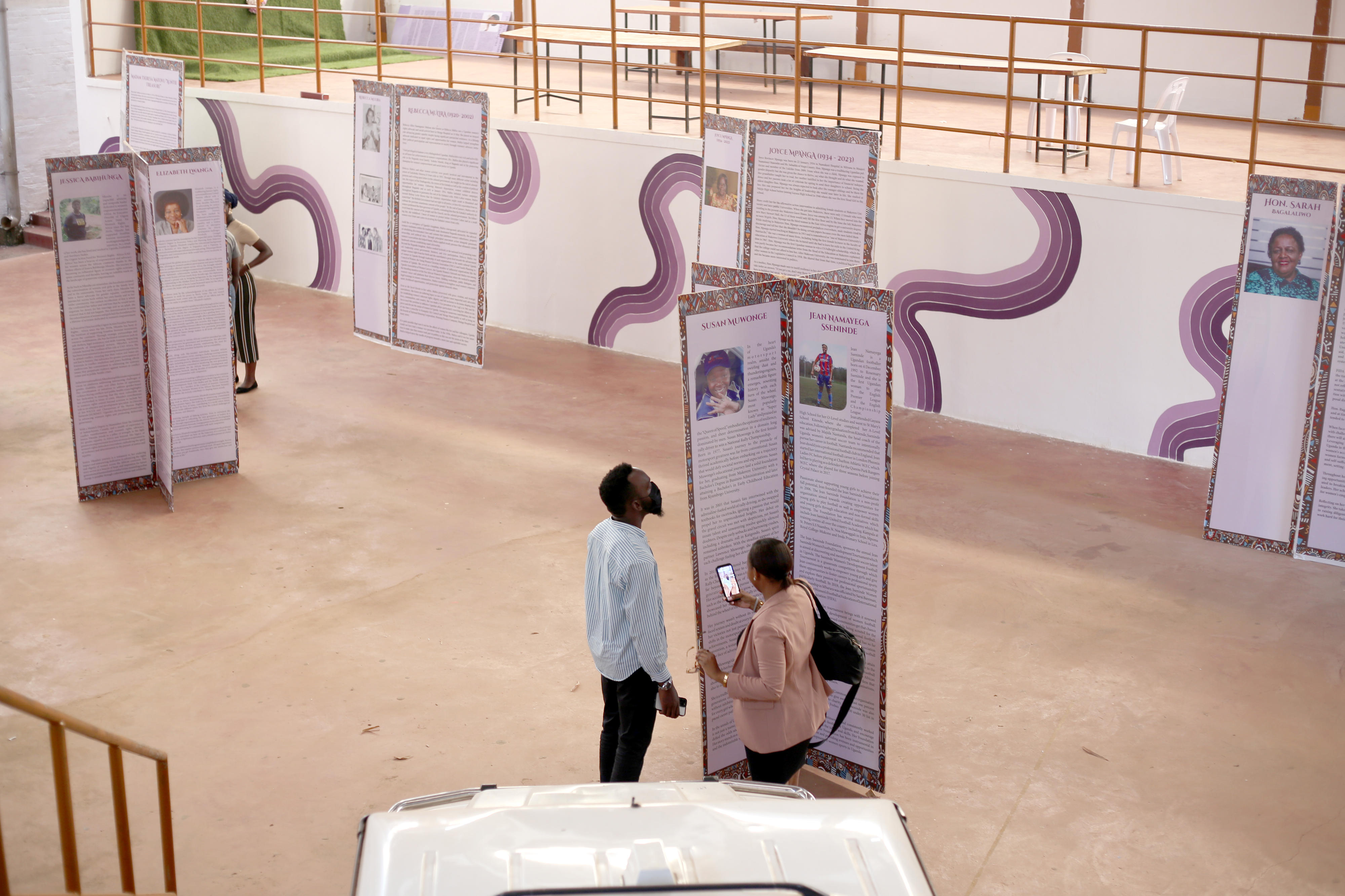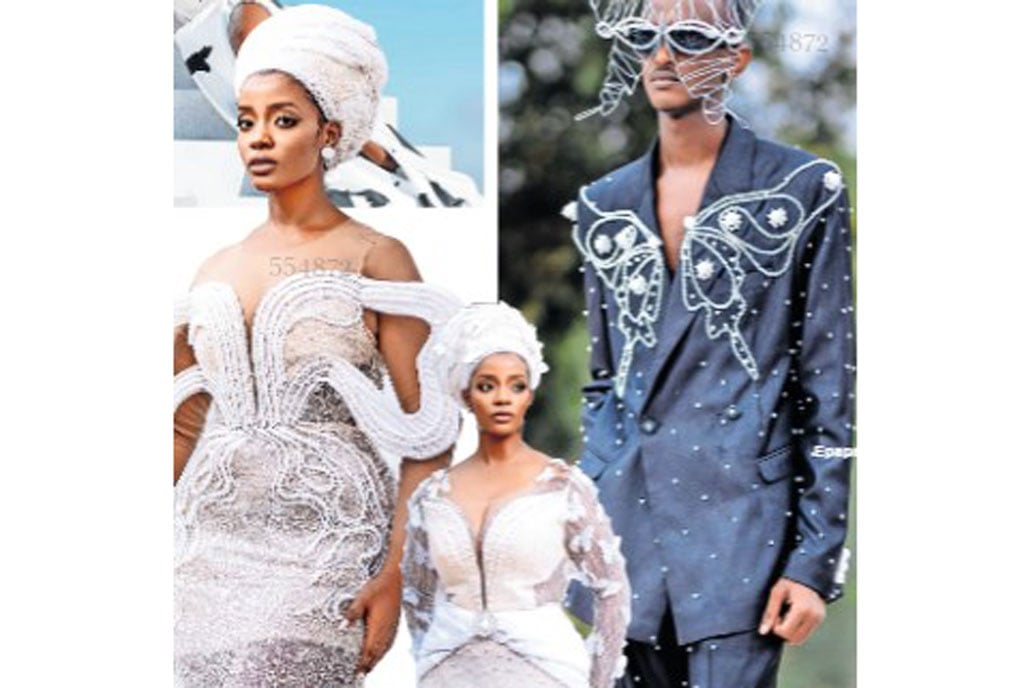
One of Joshua Alba’s artworks named Papilio Transitus. PHOTO/COURTESY/ PHILIP MATOGO
“Every child is an artist; the problem is staying an artist when you grow up,” said the Spanish painter Pablo Picasso.
Those who survive their youth sufficiently to remain artists develop a style that is as individual as a fingerprint. Thereupon, they paint pictures, draw, take photos, make etchings or lithographs in the manner of Rene Magritte, Salvador Dali and other artists who have developed their own style.
We may also add Joshua Alba to this thin roster.
Budding talent
Alba is a 21-year-old Ugandan illustrator and designer, who is slowly growing into the trousers of artistic maturity with his captivating abstract art style known as Al’paradigmic art. The term derives from “Al’paradigm” (pronounced al.para.dime), which reflects Alba’s personal paradigm of reality, encapsulating his unique perspective on existence. His work delves into the manipulation of Space, Light, and Time, offering a unique perspective on reality.
It also involves the use of visual codes, which comprise dashes and spaces that translate to the digits 1, 2, 3 and 4, as well as cryptic symbols, illustrations, and geometric patterns, which can be manipulated using mirrors.

Alba’s art piece named Genesis
Through his art, Alba highlights the significance of Space, Light, and Time in grappling with life’s profound questions. His pieces touch on various themes such as religion, love and politics while aiming to foster shared meaning among individuals from diverse social backgrounds.
Why Space, Light, and Time?
Alba believes in the profound influence of space, light, and time on our lives. According to his philosophy, everything exists within defined spaces that can be divided into dimensions. These dimensions shape our reality, influenced by the activities within them.
Light plays a crucial role in this dynamic. It travels through space, creating the perception of time passing. Day and night cycles mark the presence and absence of light, giving the illusion of time and changing seasons.
Time, in turn, is the essence of life. It brings forth life and ultimately leads to death.
“Life and death evoke fears and desires within us, driving us to dream. Dreams reflect our deepest fears and desires, such as wealth, power, love, and knowledge, as well as fears of death, failure, and oblivion,” Alba says.
He adds: “By manipulating space, light, and time, that reality itself can be altered, influencing the nature of existence within that reality.”
Ultimately, he concludes that all organisms exist within space, rely on light, and are bound by time.
Early promise
Inspired from a young age, Alba’s passion for art smoldered with his exposure to cartoons and comics as his talent emerged from its infancy. Intrigued by elements of space, mirrors, magic, and illusions, he found inspiration that would later manifest in his own work.
It was during a period of lockdown, at the age of 18, that he encountered what he describes as an “artistic crisis.” Struggling to define his artistic direction, he felt a deep desire to establish himself as a successful artist with a distinct style. This journey of self-discovery led him to the works of the renowned Dutch graphic illustrator, MC Escher.
Escher’s art profoundly influenced Alba’s perspective on both his own work and the world at large. Inspired by Escher’s creations, Alba embarked on the development of Al’paradigmic art, beginning with his inaugural series, “All the Secrets We Hide on a Blank Canvas.”
He acknowledges that his artistic development was significantly shaped by his mentors during his primary and high school years: Ruth Nankinga, David Kwesiga, and Patrick Achoroi. Additionally, he credits his Senior One colleague, Prince Kinyengyere, for contributing to his growth as an artist.
Art studio
Alba established Alba Joshua Studio, a private art studio dedicated to creating, publishing and preserving his artworks. The studio also endeavours to promote emerging writers, exemplified by its inaugural publication, WINDS, an anthology produced in collaboration with Makerere College School.
The future of Al’paradigmic art is embracive of it becoming a symbol of unity, bridging divides among people from all walks of life. Alba sees it as a catalyst for introspection, prompting individuals to question their actions and collapse societal barriers in pursuit of a just cause.
Alba also believes in the transformative power of art to change the world. Viewing art as a medium capable of altering perspectives and fostering empathy among people, he endeavours to validate this vision.

Alba’s art piece named Universe
All told, Alba aims to challenge ingrained beliefs and societal norms, offering viewers a fresh lens through which to interpret and engage with pressing issues. He is confident that his art has the potential to inspire positive change and reshape perceptions, encouraging individuals in the context of a more egalitarian world.
“To be an artist is to grasp the reality that complete self-understanding is a lie, and understanding from others is equally rare. We exist in our own uniqueness. It’s a battle within oneself and against the world, yet a profoundly worthwhile battle,” he says.
As he slugs it out, his art permits others to do the same.
Exhibitions
At the age of 19, Alba made his debut solo exhibition at Seyna Art Gallery in Entebbe. Showcasing 22 of his abstract art pieces, he introduced a new dynamic to the art world.

Joshua Alba
Later, he launched the Observer Project, which presents a series of provocative illustrations featuring a fictional character called the Observer. In these artworks, the Observer is depicted amidst chaotic events or scenes of negative manifestation, observing the surrounding life with emotionless stares.
The Observer, characterised by a human body and a box-shaped mask covering its head, refrains from engaging in dialogue with other characters. Instead, it meticulously scrutinises societal changes through a ‘T’ shaped vision mesh on its mask.
Symbolically, the character embodies the ordinary individual within each of us, compelled to witness societal shifts, particularly the negative ones, while feeling silenced in expressing their thoughts. Reflecting this, The Observer lacks a mouth, emphasising its inability to vocalise opinions.
Its ‘T’ shaped vision mesh, limiting its peripheral sight, signifies how individuals often perceive events without grasping the complete narrative.








